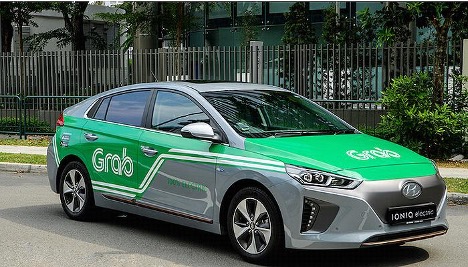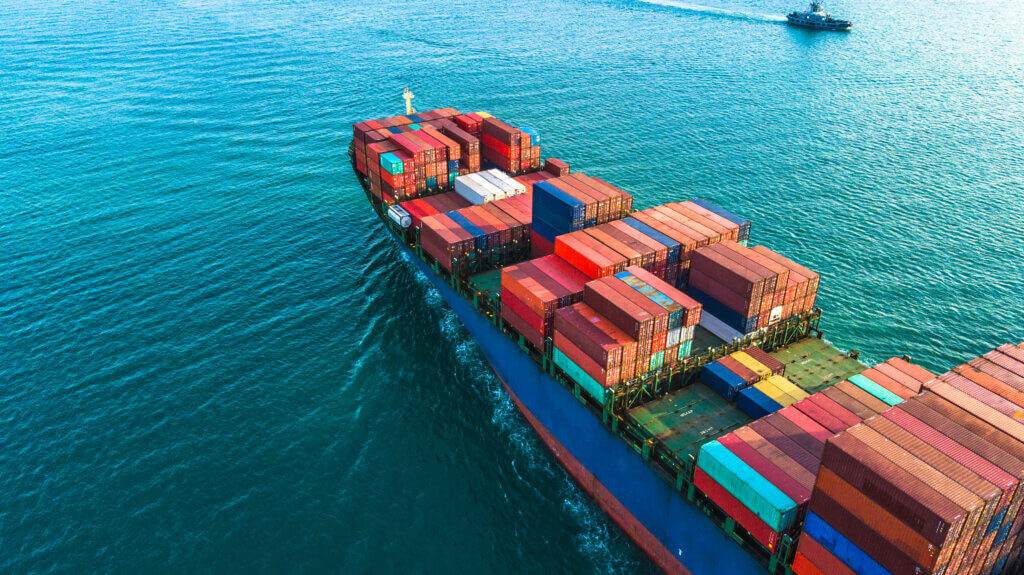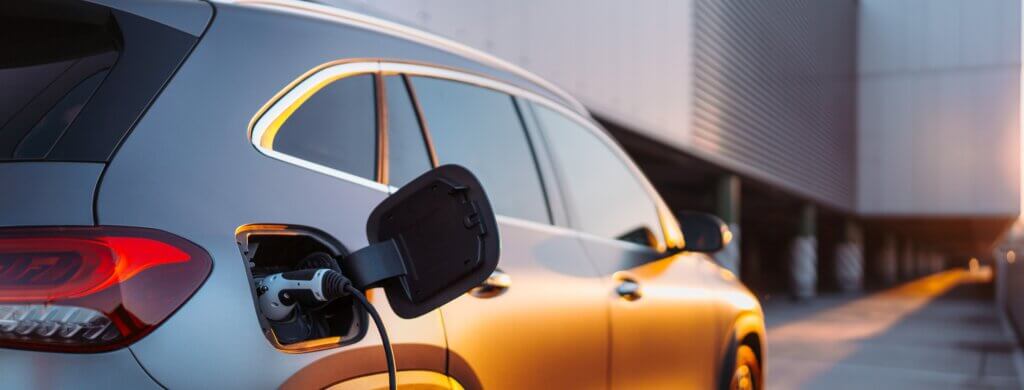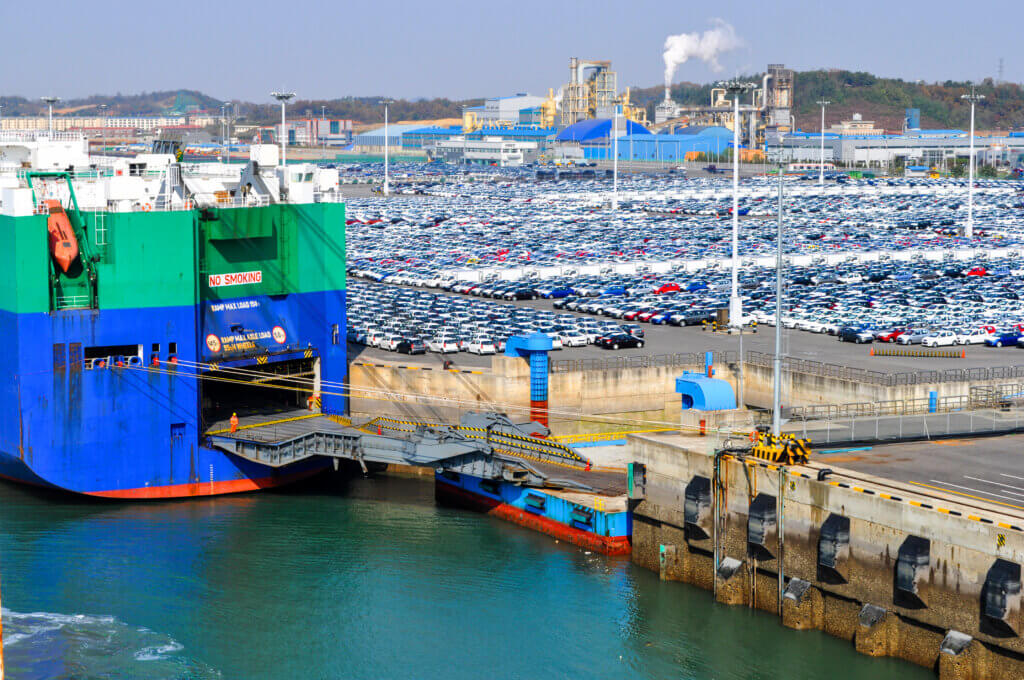Global Electric Vehicle Ecosystem Takes Shape
Sales of electric cars across the world are “booming” and are “set to surge to yet another record this year,” the International Energy Agency announced this week, releasing the latest edition of the annual “Global Electric Vehicle Outlook” from its headquarters in Paris.

Sales of electric cars across the world are “booming” and are “set to surge to yet another record this year,” the International Energy Agency announced this week, releasing the latest edition of the annual “Global Electric Vehicle Outlook” from its headquarters in Paris.
Combining historic findings with forward-looking projections, the report examines deployment of electric vehicles and charging infrastructure, energy use, greenhouse gas emissions and battery demand.
The IEA finds that electric vehicles have expanded their share of the overall car market to roughly one-fifth, and they are “leading a major transformation of the auto industry that has implications for the energy sector, especially oil.”
The new edition of the IEA’s annual “Global Electric Vehicle Outlook” projects that in just seven years, by 2030, the average share of electric cars in total sales across the world’s three largest EV markets – China, the European Union and the United States – will rise to around 60 percent.
The IEA’s 2023 Outlook report shows that more than 10 million electric cars were sold worldwide in 2022, and that sales are expected to grow by another 35 percent this year to reach 14 million.
This “explosive growth” means electric cars’ share of the overall car market has risen from around four percent in 2020 to 14 percent in 2022 and is set to increase further to 18 percent this year, based on the latest IEA projections.
“Electric vehicles are one of the driving forces in the new global energy economy that is rapidly emerging – and they are bringing about a historic transformation of the car manufacturing industry worldwide,” said IEA Executive Director Fatih Birol.
“THE TRENDS WE ARE WITNESSING HAVE SIGNIFICANT IMPLICATIONS FOR GLOBAL OIL DEMAND. THE INTERNAL COMBUSTION ENGINE HAS GONE UNRIVALLED FOR OVER A CENTRY, BUT ELECTRIC VEHICLES ARE CHANGING THE STATUS QUO. BY 2030, THE WILL AVOID THE NED FOR AT LEAST FIVE MILLION BARRELS OF OIL EACH DAY. CARS ARE JUST THE FIRST WAVE: ELECTRIC BUSES AND TRUCKS WILL FOLLOW SOON.”
– Dr. Fatih Birol, Executive Director, International Energy Agency
Today's EV Buyers Concentrated in Three Regions
The overwhelming majority of electric car sales to date happen in just three markets: China, the European Union, and the United States, but these are by no means the only regions where eager EV buyers reside.
China is the frontrunner, with 60 percent of global electric car sales taking place there in 2022. Today, more than half of all electric cars on the road worldwide are in China.
Europe and the United States, the second and third largest markets, both saw strong growth with sales increasing 15 percent and 55 percent respectively in 2022, the IEA Outlook report finds.
Ambitious policy programs in major economies, such as the Fit for 55 package in the European Union and the Inflation Reduction Act in the United States, are expected to further increase market share for electric vehicles this decade and beyond.
The encouraging trends are also having positive effects on battery production and supply chains. The new report highlights that announced battery manufacturing projects would be more than enough to meet demand for electric vehicles to 2030 in the IEA’s Net Zero Emissions by 2050 Scenario.
Even so, manufacturing remains highly concentrated, with China dominating the battery and component trade. China increased its share of global electric car exports to more than 35 percent last year.
Other economies have announced policies to foster domestic industries that will improve their competitiveness in the EV market in years to come.
The EU’s Net Zero Industry Act aims for nearly 90 percent of annual battery demand to be met by domestic battery manufacturers. Similarly, the U.S. Inflation Reduction Act places emphasis on strengthening domestic supply chains for EVs, batteries and minerals.
Between August 2022, when the Inflation Reduction Act was passed, and March 2023, major EV and battery makers have announced investments totalling at least US$52 billion in EV supply chains in North America.
ASEAN Countries to Create 'Electric Vehicle Ecosystem'
Despite a concentration of electric car sales and manufacturing in a few big markets, there are promising signs in other regions.
The 10 countries in ASEAN, the Association of South East Asian Nations: Brunei, Cambodia, Indonesia, Laos, Malaysia, Myanmar, the Philippines, Singapore, Thailand, and Vietnam, are more interested in electric vehicles than ever. They will be getting support from ASEAN this year in the form of an agreement to develop their “electric vehicle ecosystem.”
Indonesia latched onto electric vehicles a little earlier than other ASEAN governments. In December 2019, ride-hailing giant Grab and the Indonesian government unveiled the Electric Vehicle Ecosystem Roadmap that is accelerating electric vehicle adoption in the country for a more sustainable transport network. As part of the Roadmap, Grab partnered with automakers Hyundai, Astra Honda Motor, and Gesits to launch four- and two-wheel EV pilots in Greater Jakarta, over the protests of existing taxi drivers.
Now, that effort has spread across the 10 ASEAN countries.
“In the High-Level Task Force on Economic Integration meeting, ASEAN countries agreed to develop an electric vehicle ecosystem in ASEAN, which will be ratified at the 42nd Summit next May,” Indonesian Minister of Foreign Affairs Retno Marsudi said during a press conference in Jakarta on April 5.
Indonesia will host the 42nd ASEAN Summit in Labuan Bajo, Indonesia from May 6 to 11, 2023. Once a small fishing village, Labuan Bajo now is a gateway to environmental tourism. Visitors take trips across nearby Komodo National Park to islands inhabited by the famous Komodo dragons.
Foreign Minister Marsudi said Indonesia is attempting to increase regional energy security by supporting the transition from fossil energy to clean and renewable energy, and by building regional ecosystems for electric vehicles.
Indonesia has some of the world’s largest reserves of nickel and a ban on the export of nickel ore, and the country is making itself essential to the electric vehicle industry, which needs nickel.
According to Reuters, in just three years, Indonesia has signed more than a dozen deals worth more than US$15 billion for battery and electric vehicle production in the country with manufacturers including Hyundai, LG Group, and Foxconn.
Last October, the government of Indonesian President President Joko Widodo declared that Indonesia’s state firms must use only EVs by 2025 in a push to net zero emissions.
Electric car sales more than tripled in India and Indonesia last year, although from a low base, and they more than doubled in Thailand, according to ASEAN. The share of electric cars in total sales rose to three percent in Thailand, and to 1.5 percent in India and Indonesia. A combination of effective policies and private sector investment could increase these shares in the future.
The picture did change in 2022, when electric car sales more than tripled in India to 1.5 percent of the country’s total car sales.
The Indian government’s US$3.2 billion incentive program, which has attracted investments worth US$8.3 billion, is expected to increase battery manufacturing and EV rollout in the coming years.
A 2022 article by the global management consulting firm McKinsey & Company, “Capturing growth in Asia’s emerging EV ecosystem,” explains that in Asian countries, drivers are adopting electric vehicles at different paces. China, Japan, and South Korea have established comprehensive policy frameworks to support EV adoption, while emerging Asia is lagging.
Still, Thailand has set out its 3030 EV Production Policy, which aims to reach 30 percent of domestic vehicle production by 2030. And Indonesia is banning all sales of fossil fuel motorcycles by 2040 and fossil fueled cars by 2050.
In many developing economies, two- or three-wheelers offer an affordable way to get access to mobility. Their electrification is important to fostering sustainable development. In 2017 India overtook China to become the world’s largest market for electric two-wheelers, and over half of India’s three-wheeler registrations in 2022 were electric, McKinsey & Company reports, demonstrating their growing popularity.
Emerging Asian markets today represent the largest micromobility markets. With the increasing cost-competitiveness of electric models and regulators incentivizing consumer adoption, electric two-wheelers will become a predominant mode of transport in the region.
McKinsey & Company modeling shows that by 2030, India and Indonesia will become the second- and third-largest electric two-wheeler markets in the world after China, growing at more than 60 percent annually. Such development will translate into an electrification rate of two-wheelers at around 36 percent in India and ASEAN by 2030, compared with less than one percent today.
Africa Slowly Coming to Accept EVs
The African Development Bank Group announced on January 31 that its Sustainable Energy Fund for Africa (SEFA) will provide a US$1 million technical assistance grant to the Green Mobility Facility for Africa (GMFA).
The Green Mobility Facility provides technical assistance and investment capital to accelerate and expand private sector investments in sustainable transport for seven countries: Kenya, Morocco, Nigeria, Rwanda, Senegal, Sierra Leone, and South Africa.
The US$1 million SEFA grant will support the creation of an enabling environment for electric vehicles, the design of EV business models and guidelines for the public and private sector, the development of a bankable pipeline of e-mobility projects, regional coordination, and knowledge sharing amongst other upstream activities to help catalyze follow-on private sector financing during the GMFA’s next investment phase.
“Mobility is a fundamental lifeline that connects people to critical services, jobs, education, and opportunities,” said Nnenna Nwabufo, director-general of the bank’s East Africa Regional Development Office.
“THE AFRICAN DEVELOPMENT BANK IS COMMITTED TO BUILDING A SUSTAINABLE AND MORE CLIMATE-RESILIENT FUTURE BY CATALYZING PRIVATE INVESTMENT IN LOW-CARBON SOLUTIONS.”
– Nnenna Nwabufo, Director-General, Africa Development Bank East Africa Regional Development Office
“We believe GMFA will have a tremendous impact on the African market by accelerating the shift to green mobility, reducing over 2.1 million carbon dioxide equivalent tons of greenhouse gas emissions and facilitating the creation of 19,000 full-time jobs,” Nwabufo said.
“Future demand for mobility solutions and vehicle ownership is expected to increase with rapid urbanisation, population growth, and economic development. We are delighted to receive this support from AfDB. We see this as a vote of confidence in our efforts to shift to e-mobility solutions and advance Rwanda’s transition to a low-carbon economy,” said Clare Akamanzi, Chief Executive Officer of the Rwanda Development Board. Rwanda is one of seven pilot countries for GMFA.
Overall, the global auto industry is undergoing a major change, with electrification set to avoid the need for five million barrels of oil a day by 2030.
Toute l’actualité de Movin’On
dans votre boîte mail
Auteur
Partager
Tweets de @movinonconnect
Final chance 4 you to earn up to $1,000 bonus before the championship! 📣
Bet UConn vs. BAMA to claim it: ⤵️
New look, new #OverstockCrazyGoodDeals!
We’re giving away $200 #Overstock gift cards every day 3/30 - 4/5 ONLY here on X 🤑. Tap below and post to see if you’re a winner. 👇
18+/NoPurchNec/USonly/Subj to verification/rules
Learn how to become a Scrum Master in the link below
L’actualité de la mobilité durable
Découvrez les dernières tendances, des analyses thématiques et nos prochains rendez-vous






